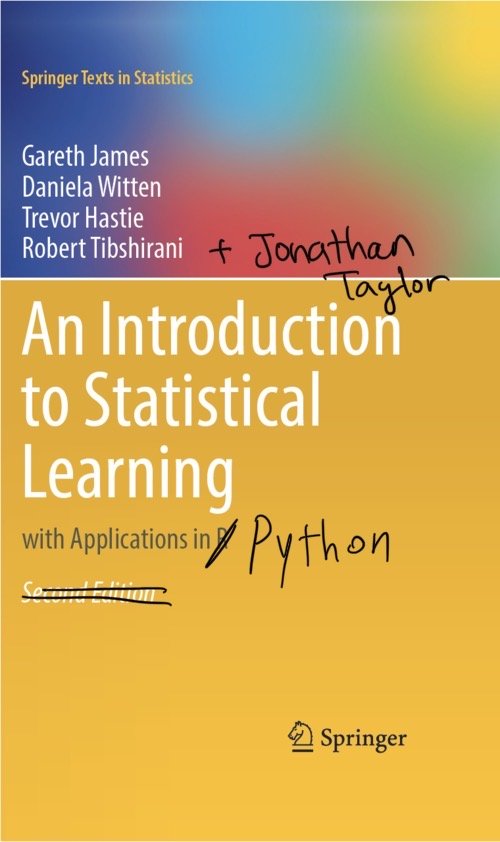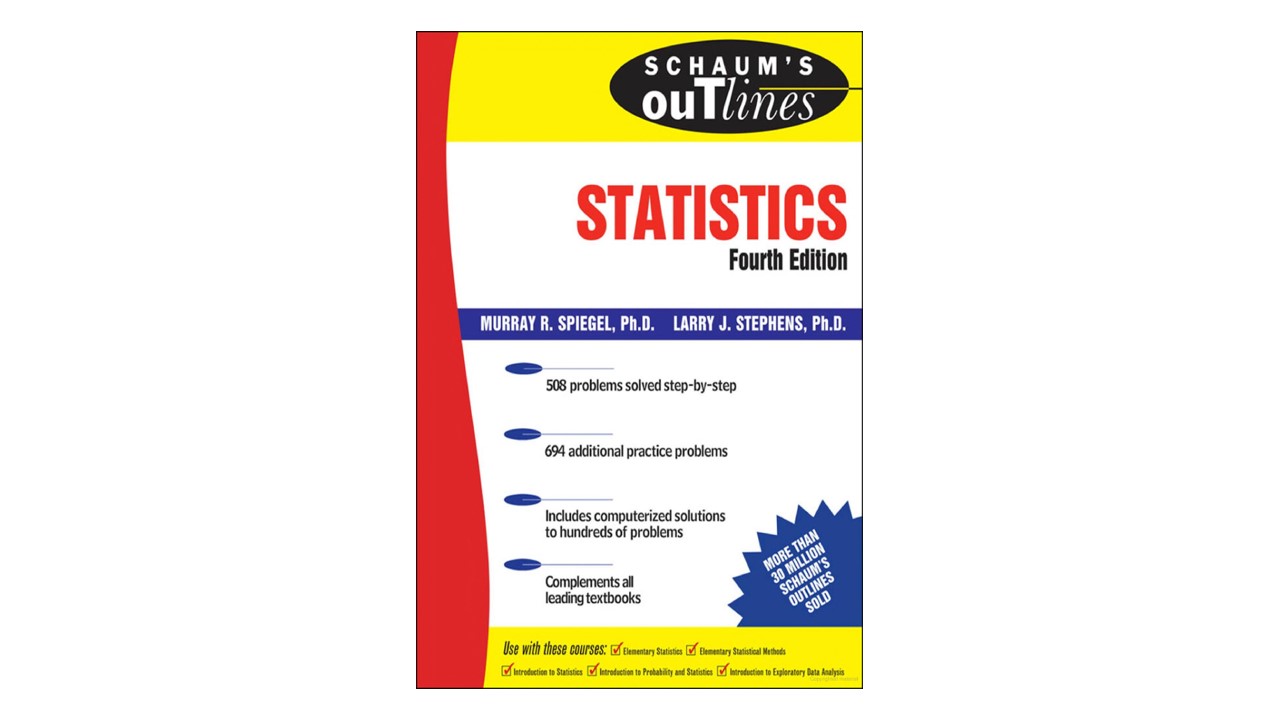11 Best Statistics Books To Read Now
This article shares the list of 11 statistics books that can help you in your data science journey.
Statistics is the Heart of Data Science.
From Data Exploration & Preprocessing to Hypothesis Testing, statistics play an important role in Data Science for decision-making and problem-solving.
Statistics help Data Scientists
- explore and clean data by identifying patterns, trends, and outliers.
- conclude and make predictions with a certain level of confidence using the techniques like hypothesis testing.
To be a skilled data scientist, one must be well-versed in statistical and practical application principles. To help you in your data science journey, we have compiled a list of the top 5 statistics books.
- Introduction to Statistical Learning with R
- Practical Statistics for Data Scientists
- Naked Statistics
- Think Stats
- How to Lie with Statistics
Once you complete reading the above-mentioned descriptions, you will get a bonus recommendation.
Related Read: Skewness and Kurtosis
Now let’s start the article!!
An Introduction to Statistical Learning with R by Gareth James, Daniela Witten, Trevor Hastie, and Robert Tibshirani
The book is a comprehensive guide that provides a broad outline of the important concepts and techniques of statistical learning. The book starts with the fundamental concepts of linear regression and resampling methods for model validation and assessment. It also covers the regularization techniques such as LASSO and Ridge Regression.
Advanced topics such as non-linear modelling, tree-based methods, support vector machines, and unsupervised learning techniques are explained with the help of practical applications (real-world scenarios) and case studies.
This book is an invaluable resource for building strong fundamentals in statistical learning and effectively applying real-world problems using R.
Some of the topics covered in this book are:
- What is Statistical Learning?
- Regression
- Classification
- Resampling Methods
- Linear Models Selection and Regularizations
- Moving Beyond Linearity
- Tree-Based Methods
- Support Vector Machines
- Survival Analysis
- Unsupervised Learning
- Deep Learning
The Python Edition of the book is ready to be launched in the summer of 2023.
Practical Statistics for Data Scientists by Peter Bruce, Andrew Bruce, and Peter Gedeck
The best way to understand the statistics is by coding up the simulation that makes the theoretical statistics concept
more concrete, and this book has 50+ code snippets in R and Python that do exactly that!
The book offers a hands-on approach to learning essential statistical concepts and techniques relevant to data science. Practical Statistics for Data Scientists is designed to best suit both beginner and experienced professionals to enhance their skills in statistical analysis and data-driven decision-making.
The book starts with a solid foundation in exploratory data analysis. Then it explores essential techniques such as hypothesis testing, linear regression, logistic regression, and regularization methods like LASSO and Ridge Regression.
The author demonstrates how to implement statistical techniques using popular programming languages such as R and Python throughout the book.
Some of the topics covered in this book are:
- Exploratory Data Analysis
- Data and Sampling Distributions
- Statistical Experiments and Significance Testing
- Regression and Prediction
- Classification
- Statistical Machine Learning
- Unsupervised Learning
Naked Statistics – Stripping the Dread from the Data By Charles Wheelan
Naked Statistics is a must-read book for everyone seeking an in-depth understanding of statistics without getting stuck with technical words and mathematical complexity. The book starts with basic statistics principles such as mean, median, mode, standard deviation, and correlation. Then it delves deeper into the concepts like probability, hypothesis testing, sampling, regression analysis, and all while maintaining an entertaining and easy-to-understand narrative. The book contains real-life scenarios to emphasize the relevance and importance of statistical concepts in our day-to-day life.
Wheelan also addresses the potential misuse and misinterpretation of statistics.
Some of the topics covered in this book are:
- Descriptive Statistics
- Correlation
- Basic Probability
- Central Limit Theorem
- Inference
- Regression Analysis
- Program Evaluation
Think Stats By Allen B Downey
Think Stats is an introduction to Probability and Statistics for Python Programmers. The book is based on the Python library for probability distribution (PMFs and CDFs). It emphasizes the simple techniques that you can use to explore real data sets and answer interesting questions.
The book begins with an overview of exploratory data analysis, emphasizing the importance of understanding the data distributions, visualizing the relationship between variables, and identifying patterns and anomalies. It also covers advanced topics like Bayesian Statistics, regression analysis, and time series analysis.
Some of the topics covered in this book are:
- Exploratory Data Analysis
- Probability Distributions
- Cumulative Distributions
- Modelling Distributions
- Estimation
- Hypothesis Testing
- Linear Least Square
- Regression
- Time Series Analysis
- Survival Analysis
- Analytic Methods
How to Lie with Statistics By Darrel Huff
How to Lie with Statistics is a classical book that exposes the potential misuse and manipulation of statistical data in various contexts. It is clear, concise, funny, not too complex, and above all, it’s a must-read book who want to understand politics, economics, science, or life in general.
The book begins with the common pitfalls and misconceptions about interpreting statistical data. Later it explores the various techniques that can be used to manipulate the data. The book contains real-life examples illustrating how statistics can be twisted to support a specific agenda.
Some of the topics covered in this book are:
- Biased Samples
- Biased Averages
- Discarded Data
- Graph Manipulation
- Correlation vs Causation
Now, it’s time for your Bonus.
Schaum’s Outline Statistics by Spiegel and Stephens
This book is for the beginner who doesn’t have any understanding of statistics prior. It covers all the topic from the very basic to advanced level. The concepts are explained with the help of examples and lot of questions are also there for practice.
Some of the Topics Covered in the books are:
- Variables and Graphs
- Frequency Distributions
- Measure of Central Tendency: Mean, Median, and Mode
- Measure of Dispersion: Range, Variance, and Standard Deviation
- Moments, Skewness, and Kurtosis
- Elementary Probability Theory
- Probability Distribution: Normal, Binomial, and Poisson
- Sampling Theory
- Estimation Theory
- Decision Theory
- Chi-square Test
- Curve Fitting and Methods of Least Squares
- Correlation Theory
- Multiple and Partial Correlation
- Analysis of Variance (ANOVA)
- Non-Parametric Test
Here are five more suggestions of statistics books, that you can refer.
- The Art of Statistics: Learning from the Data by David Spiegelhalter
- Statistics Done Wrong by Alex Reinhart
- Statistics in Plain English by Timothy C. Urdan
- The Book of Why by Judea Pearl and Dana Mackenzie
- The Elements of Statistical Learning by Trevor Hastie, Robert Tibshirani, and Jerome Friedman
Related Reads









FAQs
What is the best statistics book for beginners in data science?
The Elements of Statistical Learning by Trevor Hastie, Robert Tibshirani, and Jerome Friedman is often recommended as a comprehensive introduction to statistics for data science.
Are there any statistics books that use Python for data science?
Python for Data Analysis by Wes McKinney is a good book that uses Python to teach statistical analysis and data science.
What is a good statistics book for understanding probability in data science?
Introduction to Probability by Joseph K. Blitzstein and Jessica Hwang is a highly recommended book for understanding probability in the context of data science.









